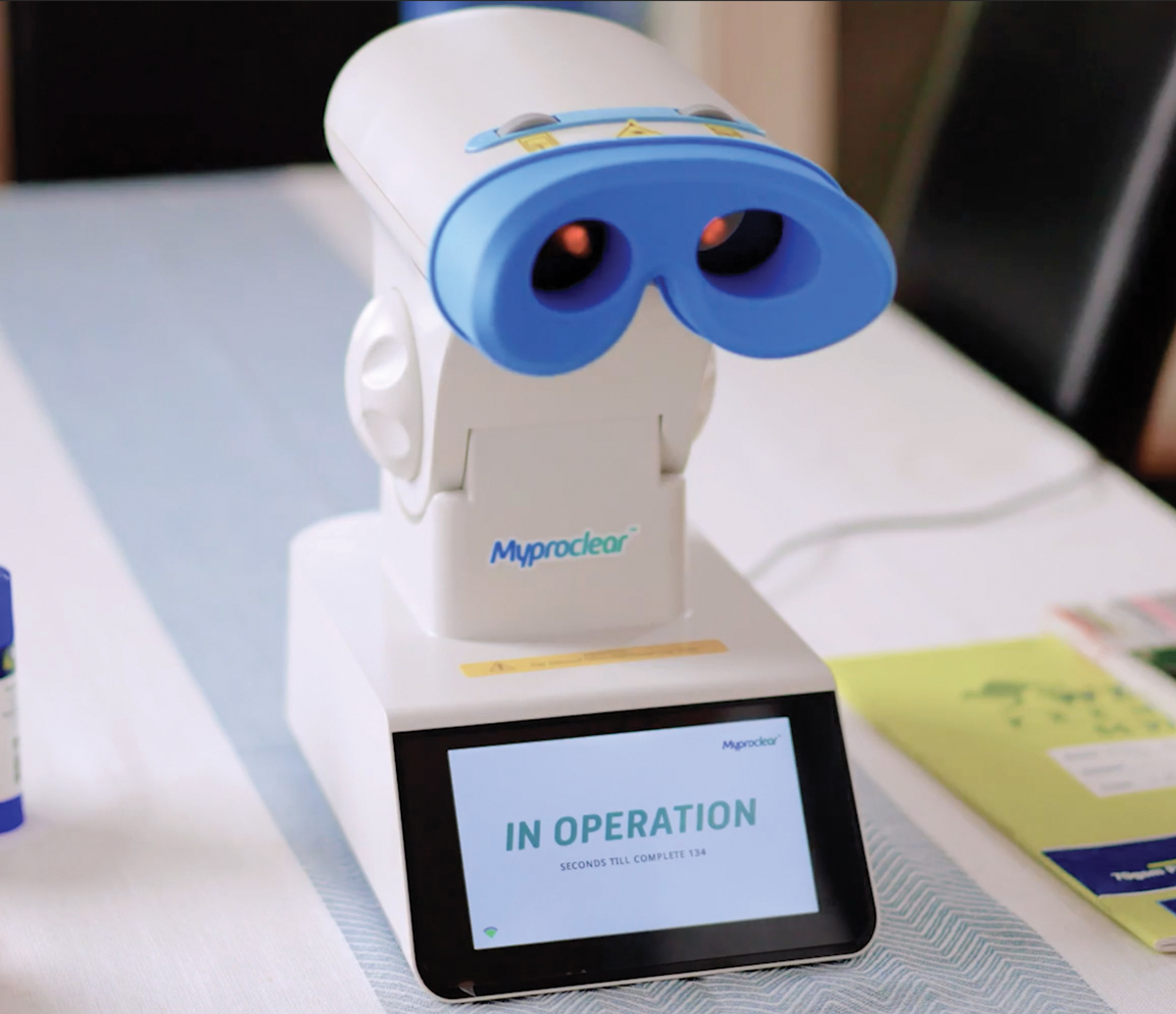 |
Red light treatment may reduce myopia progression in refraction or axial length without major adverse events. Photo: Eyerising International. Click image to enlarge. |
In recent years, repeated low-intensity red light irradiation has emerged as a new myopia therapeutic intervention, particularly overseas. So far, however, few systematic reviews of its efficacy in reducing the course of pediatric myopia have been published or registered. A recent study, published in American Journal of Ophthalmology, conducted a systematic review and meta-analysis based on a comprehensive review of the existing literature. The researchers found that this treatment option may be effective in slowing myopia progression and delaying axial elongation. However, they noted that the evidence was low-certainty, and better and larger randomized controlled trials with a two-year follow-up were needed.
Of the 13 studies (eight randomized controlled trials, three non-randomized controlled trials, and two cohort studies) involving children and adolescents with myopia, eight met the meta-analysis criteria. These studies included a total of 934 individuals, and eight reported the change in spherical equivalent refractive error (SER) and axial length (AL), while four reported the change in subfoveal choroid thickness. All studies were carried out in China.
The weighted mean difference for myopia progression between repeated low-intensity red light treatment and the control group was 0.68D per six months for SER change, -0.35mm per six months for AL elongation and 36.04μm per six months for subfoveal choroid thickness change. None of the studies in this meta-analysis reported vision-threatening events, glare, flash blindness or afterimages after treatment, and no structural damage was seen on the photosensory layer from OCT images.
The low-intensity red light treatment scheduled in the included studies were all for three minutes per session, two treatment sessions per day, with a minimum interval of four hours between sessions. The wavelength and power of the red light used in each study varied, so it was not able to directly compare the effect of the treatment session on the efficacy in myopia control.
The researchers included one study that involved both repeated low-intensity red light and orthokeratology interventions and showed better efficacy with red light for myopia control. Nevertheless, the researchers thought “we still need more studies that include both repeated low-intensity red light and various myopia control interventions for a direct comparison of the effects between red light and them.”
As formal studies of repeated low-intensity red light treatment for myopia control did not begin until 2019 at the earliest, the follow-up of the currently included studies was short, with most lasting around a year and the shortest lasting only six months. The researchers were also worried about the rebound effect after discontinuing treatment.
“Longer-term, cumulative, rebound effects and better and larger randomized controlled trials with two-year follow-up should be investigated further,” the team concluded in their paper. “In addition, more rigorously designed trials are needed to explore the optimal treatment protocol and parameters of repeated low-intensity red light and its mechanism for myopia control.”
Tang J, Liao Y, Yan N, et al. Efficacy of repeated low-level red-light therapy for slowing the progression of childhood myopia: a systematic review and meta-analysis. Am J Ophthalmol. April 6, 2023. [Epub ahead of print]. |

